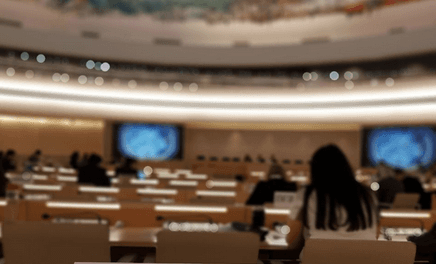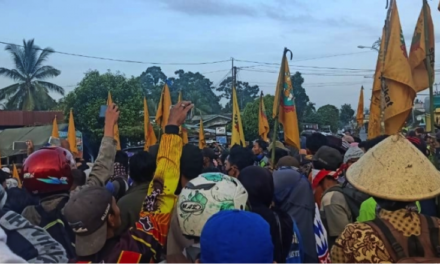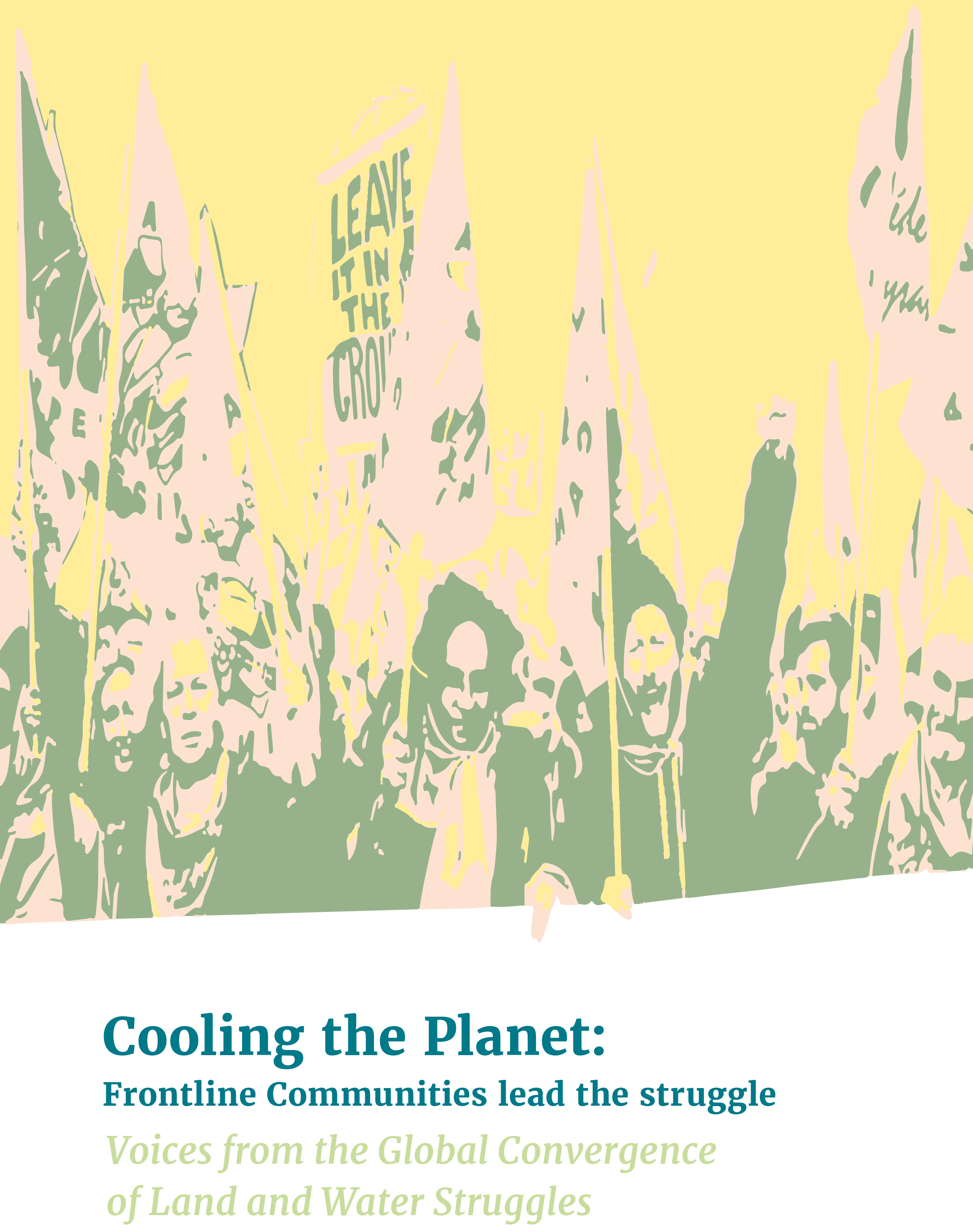Did the left lose? Not quite. One might first ask what is the left, what does it mean to be left in 2006, what does it mean to be left in 2006 in Nicaragua, and is the victorious Sandinista National Liberation Front (FSLN) that left? This is not to fall into a post-modernist relativist trap, because indeed there are permanent “indicators”, as it where, that throw light on the social and historical significance of the return of the Sandinista National Liberation Front (FSLN) to State power — and indeed on the profound transformation that the FSLN has experienced in recent years.
Historically, the surest indicator that something was progressive was the knee jerk hostility of the United States Government, more so in its own “backyard”. Throughout the electoral campaign, as indeed since the FSLN’s armed access to power in 1979, and throughout its period in legal opposition from 1990 to 2006, Washington’s position towards the Sandinistas was one of hostility; more the product of ideological zeal in Washington than in Managua. The US Ambassador, three Bush Cabinet ministers and endless stream of right wing congress members took the stage in Nicaragua, sometimes appearing to be themselves running for office in Nicaragua. They took every public and private occasion to warn the electorate of the dire consequences of an Ortega victory –suspension of aid and blocking of migrant remittances from the US (on which half of the population depends directly or indirectly) formed part of the intimidation campaign. Yet it all failed ultimately in preventing an Ortega victory, or indeed in uniting the badly-divided right wing Liberal Party to recreate the anti-Sandinista bloc that, numerically at least, still counts with a majority electorate. A defeated Liberal Party spokesperson later commented that the US Ambassador turned out to be the best campaign manager Ortega could have asked for.
The second indicator of an organized progressive social force coming to power through elections is, of course, a superior numerical turnout. But this was not the case during this election. In fact, the FSLN won the election with a smaller percentage of the votes that when it lost on two previous occasions. 62% of the electorate did not vote for the FSLN and indeed the great majority of that percentage voted against Ortega (allowance is made for the 7% that voted for the breakaway MRS that is mostly composed of Sandinistas but virulently against Ortega and the official FSLN that they charge with having fallen into a personality cult called “Orteguismo”).
Nonetheless, one must acknowledge the mass of the steadfast Sandinista electorate that remained loyal to the FSLN: 38% of chiefly poor voters, who, through thick and thin, evidently hang on to the hope and the redemption once represented by “sandinismo — the legacy of Sandino who fought against the US Marine occupation in the 1920s, of the FSLN whose finest leaders died in the war against the Somoza dictatorship, and the largely Marxist leadership that took power and who pushed through revolutionary measures, or tried to, in the midst of a furious US-backed counter-revolutionary war over the course of the 1980s. But 38 percent is not a majority and, to judge by the fairly representative election results, a majority of Nicaraguans, including much of the rural poor, associate Ortega with the very destructive undermining war and are in no mood for new ostensibly leftist and particularly anti-US experiments.
One would be tempted therefore to conclude that the both the US government and the FSLN rank and file are making a big mistake in believing that the present FSLN under the control of Daniel Ortega can or wishes to break with the neoliberal model.
That the United States is wrong and right wing may often mean that the contender is right and left wing. That surely was the case with the FSLN in 1979, but it is definitely not the case with the FSLN in 2006, personified by Daniel Ortega and a minority of the old revolutionary leadership that still remain in the party.
The key point that needs to be understood, particularly among the international progressive organizations, is that no “left” force has come to power in Nicaragua, and therefore the government (and the left) should not be judged, appreciated or condemned in those ideological or political terms. Of course, in the fact of any eventual US destabilizing and aggressive intervention, one knows where to stand. But that said, there are two important developments that merit scrutiny: first, the US has been auspiciously silent since the official election result and has little choice (in the face of extensive international observer presence) but to recognize the legal results, and second, the FSLN leaders have been auspiciously vocal since the victory in giving loud messages to the private sector, the international bankers and a IMF mission that neoliberalism (let alone capitalism) is here to stay.
One powerful FSLN leader, Bayardo Arce, went as far as to say that the FSLN government had no major or even minor discrepancy with the ongoing IMF program. This spoken in a country where 27% of the population is undernourished and over 80% classified as poor and the lowest budget per capita social expenditures in the hemisphere. Arce spoke no doubt for the dominant sector in the party who are now ‘captains of industry’ and supporters of the free trade agreement with the US. Some make the distinction between that sector and Ortega, who retains warm relations with Castro and Chavez. Ortega did denounce “savage capitalism” during the campaign, but that makes him as radical as the Catholic Church to which he also made reference as a born again Christian. He is an expert at pleasing every audience, although has yet to manage a personal breakthrough with the US Administration.
The Price of Power
In what will be recorded as a historical tragedy and ideological suicide, Ortega’s FSLN proceeded to elaborate a strategy for regaining office and breaking through the numerical lock. First, he negotiated a much-repudiated constitutional change agreement (the ‘pacto’) with Arnoldo Alemán, former President who had recently been convicted for mass corruption. Under the terms of the pacto, Alemán would first be given immunity and then a pardon if necessary in return for the Legislative votes necessary to effect a change in the Electoral Law bringing down to 35% the level needed to win the Presidency in the first round. As part of the same strategy, or through sheer luck, the Liberal Party suffered a division pitting the followers of Alemán against a breakaway Liberal Party (Alianza Liberal) headed by a US-approved technocrat banker, Eduardo Montealegre. That division (bitterly criticised by the US) sealed the fate of the election as neither faction reached 30% on its own (although together they counted for 53%). A breakaway “moderate” Sandinista group-the Movimiento Renovador Sandinista-scored a disappointing 9%.
Second, Ortega meticulously prepared a campaign (run by his wife Rosario Murillo, now surely the second most powerful figure in the FSLN) to appeal to every possible voter. Much to the shock of long-time Sandinistas, Ortega followed through his vague public embrace of “peace, love and reconciliation” by making political deals with longstanding political adversaries, including leaders of the old Somoza party and the Contras, one of whom was hand-picked for the Vice Presidential slot while other right-wingers were promised prominent government and diplomatic slots. The red and black party flag gave way to pink color propaganda, the Sandinista anthem with its reference to fighting against the US as the enemy of mankind was quietly abandoned, substituted by songs on love and reconciliation to the tune of the Beatles’ “Give Peace a Chance”. The invasion of Lebanon and the US massacres in Iraq and Afghanistan made the headlines, but not a word of criticism was heard from Ortega (or from any other candidate for that matter).
To the dismay liberation theology-minded Christians, Ortega embraced the hard-line anti-communist Catholic Church hierarchy, publicly begging forgiveness, going to mass regularly, receiving confession and even going through a Catholic wedding to with his long-time common life partner. Three weeks before the election, the entire feminist movement was shocked when Ortega reached out to the conservative Catholic population by signing statements of opposition to any form of abortion and ordering the FSLN legislators to repeal the century-old law permitting therapeutic abortion, allowing Nicaragua to join Chile and El Salvador as the only Latin American countries with such a reactionary position, the product of Pinochet-era laws and the Jesuit-murdering regimes respectively.
Nicaraguan social movements and independent NGOs were outraged as FSLN deputies steadily approved the Executive’s neoliberal agenda including investment treaties, privatizations of public utilities, corporate tax breaks and, worst of all, the Central America Free Trade Agreement with the United States (CAFTA). At the same time candidate Ortega promised to end poverty and borrowed the Vatican’s critique of “savage capitalism” (which was to say, of course, that a non-savage capitalism is possible and that socialism is not required). The Bush Administration was not convinced, but in the end former President Carter, as an electoral observer, spoke to Secretary Rice and asked that President-elect Ortega be given the benefit of the doubt.
But neither Washington nor the capitalists are willing to concede that easily. The strategy seems to be one of pushing Ortega to make even greater concessions and make more promises, now actively supporting CAFTA and the free market. Very likely the eventual cabinet appointments will probably draw on finance-capital and IMF/World Bank candidates, including members of the current regime’s cabinet. Unsurprisingly, the always-suspicious right is now demanding that an Ortega government deliver on its market-friendly promises and pro-private sector commitments. While President-elect Ortega toured sweatshops accompanied by Taiwanese investors (so much for relations with the PRC), landless peasants and town dwellers occupied plots only to be chased out by riot police the next day. Some were quoted as saying they were already sorry they voted for Ortega.
What to Expect
This is not to say one must give up on a new Ortega government, which in any case will be more than a personal proposition. However the balance of forces within organized “civil society” is not favourable, nor is it favourable at the level of the FSLN’s own internal apparatus which is strongly dominated by an even stronger Ortega, with new levels of patronage power. Then, there are the poor, many of whom are convinced that the Revolution is back and that a new historical retribution is in the making. They will no doubt be disappointed
How an Ortega government will deal with the dual constituencies remains to be seen. What is certain is that the social movements and organizing efforts will grow in strength and independence in the light of the new government’s existential ambiguities. At the very least, their role is to exercise pressure to counter the already mobilizing force of capital and the United States. How and if the Venezuelan government can inject itself into this arena is not clear, but ensuring a Venezuelan market for Nicaraguan primary produce deemed or made “non-competitive” by free trade agreements is a possible start.
The call is caution and realism, given the new government’s objective and self-imposed limitations. But there are matters that cannot wait, such as hunger and malnutrition, and Ortega claims that is his first priority when he formally takes office next January. The IMF however has other priorities and it would be difficult to for an Ortega government to be loyal to two masters. Whereas Lula in Brazil was relatively successful in pushing through an anti-hunger campaign while upholding the holy macro-economic orthodoxy demanded by capital, Ortega’s Nicaragua is in a poor position to also do the same (external “assistance” accounts for 30% of the national budget including 80% of infrastructure expenditure). How far and how much can Venezuela assist is a central question. On the one hand, given Nicaragua’s relatively small population (5 million) some strategically-placed resources, if well managed, could go a long way toward alleviating poverty, help manage pressures from below and at least buy some time. On the other hand, of course there is the none-too-small matter of the United States and how it would react. Indeed Nicaragua could become an early casualty of the Cold War between the US and Venezuela.
If, as some suspect, the FSLN’s bid has been one for power at any price, Ortega will try to juggle his way through office and distribute spoils among loyal followers. After all, he has now achieved what became an obsessive drive to return to the Presidency. In the end, the greatest limitations he will face in office are the ones that he and the FSLN have chosen to accept and now feel entitled to enjoy. Whether the hungry and poor of Nicaragua, or the United States and its internal allies in Nicaragua, will allow him to enjoy office, is another question.
Unfortunately, only a miracle in Washington (or a confrontation with it) will save the FSLN from leaving the historical scene at the end of the new Ortega administration as a discredited force. Ortega may have carried the party to victory, but if it chooses to be the progressive administrator of an ongoing neoliberal regime, then that electoral victory will turn into historical defeat as the FSLN loses what little is left of its revolutionary principles and values. Convincing the poor to regain confidence in the FSLN after a conservative Ortega administration would be a difficult task indeed. Worse still, some claim that the current FSLN goal is to sustain itself in office as part of a permanent two party in which governments change but the regime does not. In this case, the new Sandinista government will lose any possible similarity to the Venezuelan or Bolivian governments, choosing to behave more like the new pro-US government in Peru headed by Alan Garcia, another old leftist and US nemesis of the1980s, which is ever so eager to prove itself respectable to high finance
If the international left chooses to give Ortega uncritical support, it must also ask itself whether Machiavellian right-wing dealings are acceptable characteristics of a left movement, as well as posing the question whether an individual under credible accusations of sexual abuse of a minor should be the subject of ideological acclaim? Hopefully, we have learned that ideological and personal accountability are not separate considerations. Which is to say, in our Nicaraguan context, one can draw on the same historical socialist principles and insistence on human dignity, socialism and sovereignty that led to the creation of the FSLN in the first place. The more difficult job of the left in Nicaragua is to help ensure that the revolutionary anti-imperialist Sandinista cause that once rescued Nicaragua from the US Marines and from the Somoza regime, will also rescue Sandinismo, and perhaps the FSLN itself, from Ortega and Orteguismo.
*Alejandro Bendaña is Director of the Center for International Studies, Managua, Nicaragua. The Center focuses on issues of peacebuilding, reconciliation and economic justice. He was General Secretary for Foreign Affairs and United Nations Representative in the former Sandinista Government of Nicaragua. He is the author of numerous books and articles on international relations, peace, development and history.









